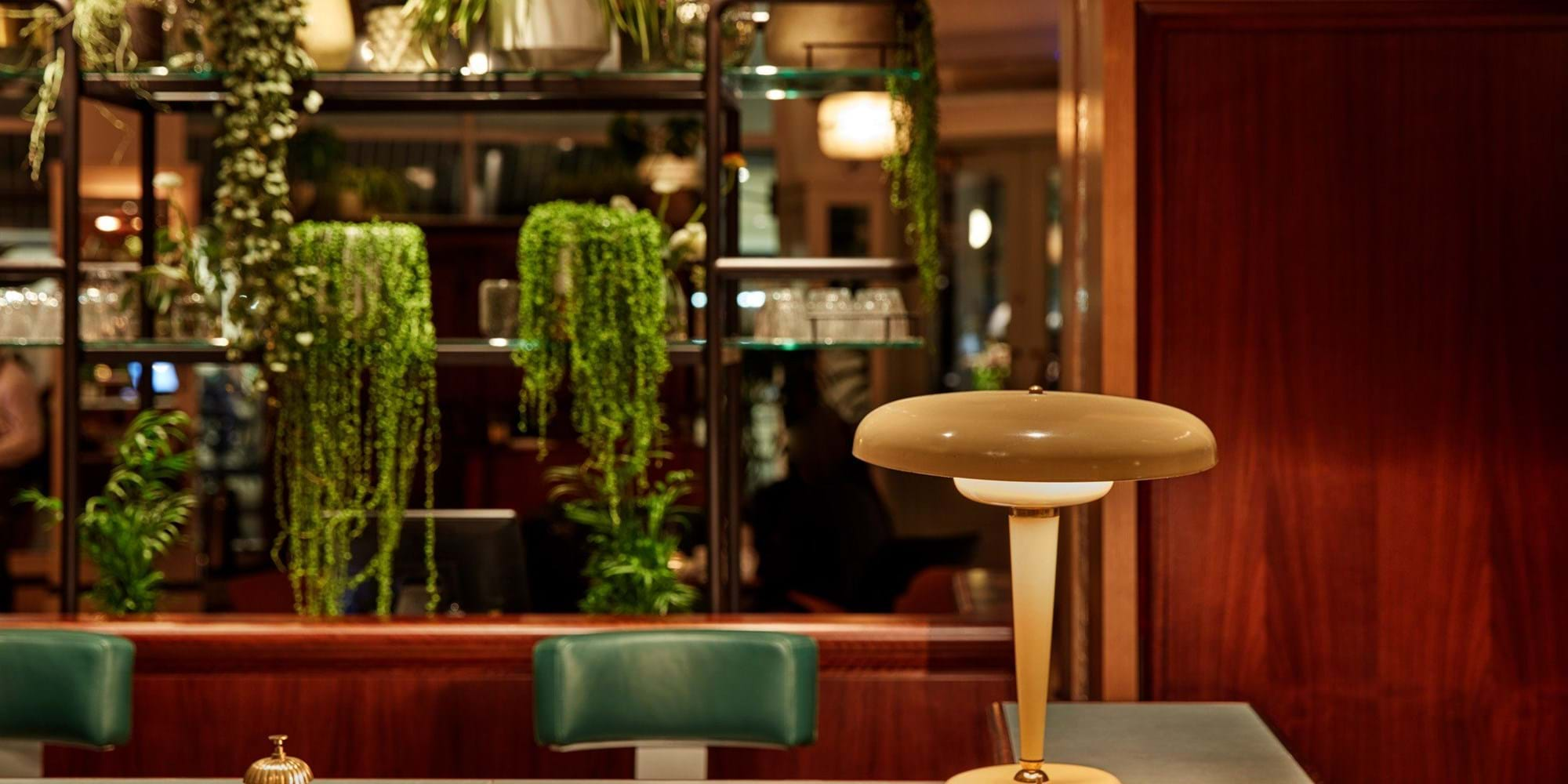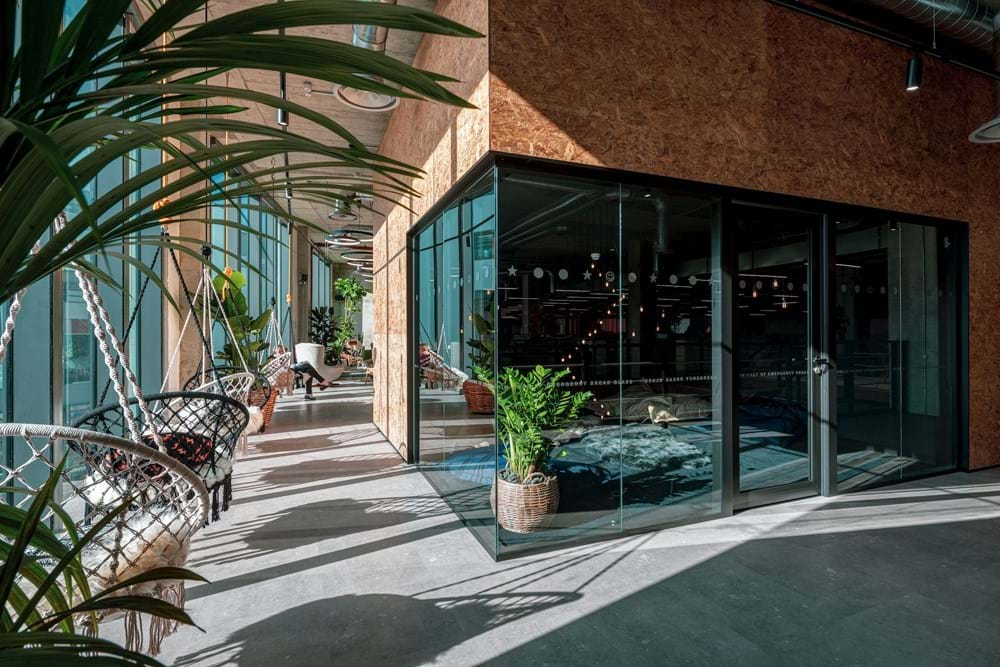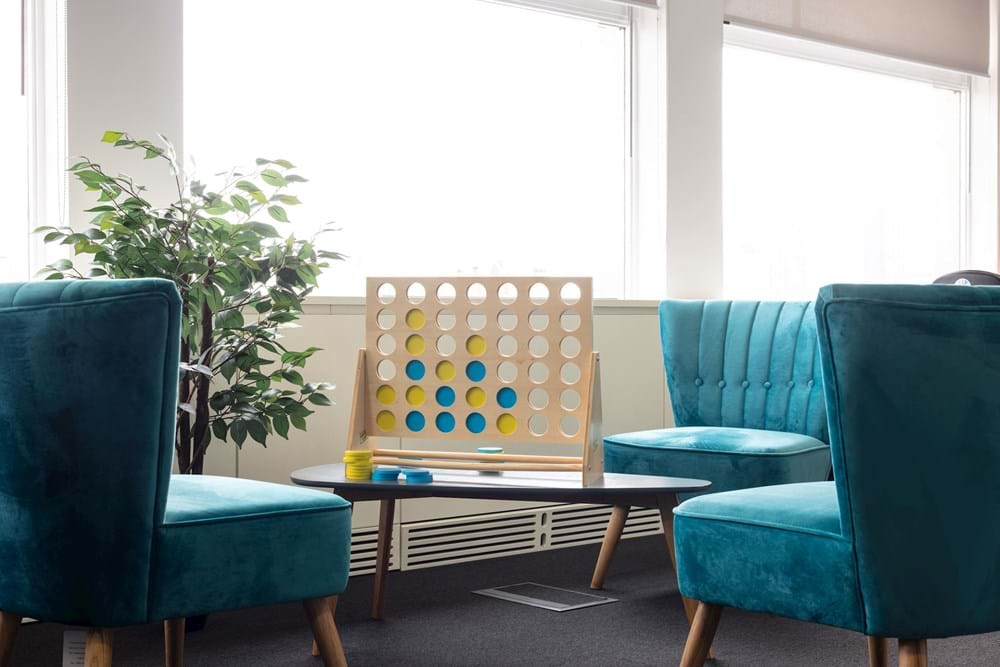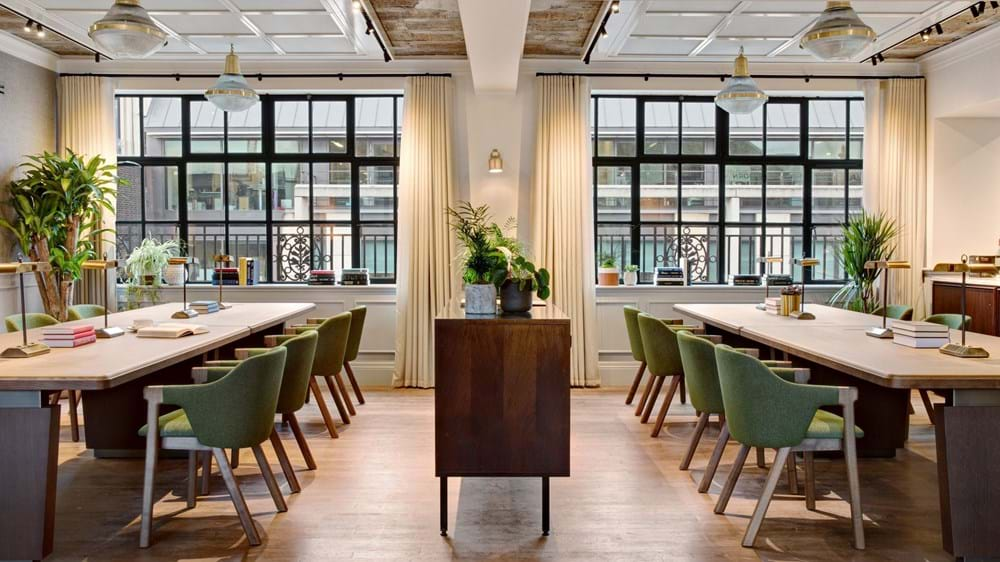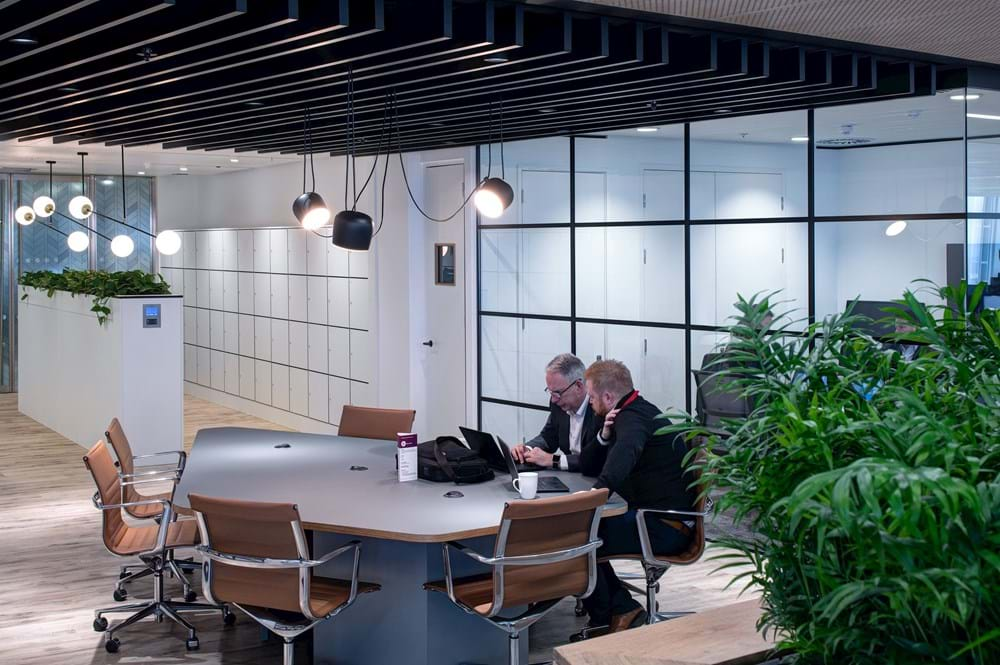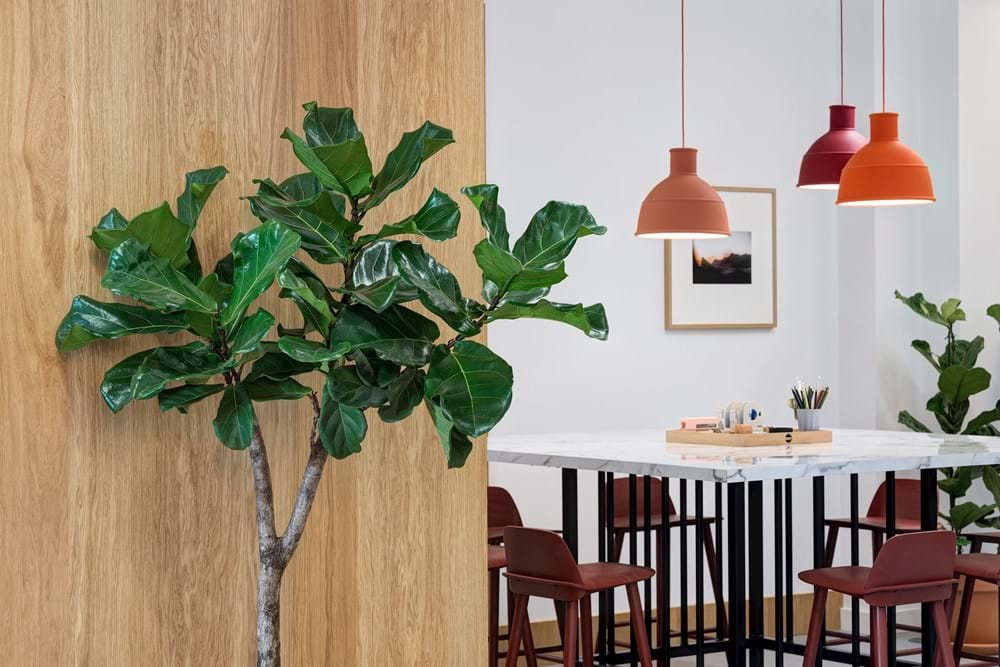How To Achieve Great Office Design Through Biophilia
There are manifold benefits to tapping into humans’ innate connection with nature, though the best examples of biophilia in the workplace take a multi-sensory approach
Biophilia is the human “urge to affiliate with other forms of life”, according to American biologist Edward O. Wilson who coined the term in his 1984 book of the same name. “If you were asked to picture a place where you feel calm and relaxed, chances are you would pick a scene involving nature,” suggests Planteria’s Biophilia White Paper, published in 2018. “This is backed up by statistics which show that 90 per cent of us imagine a natural setting when presented with this task.”
Nourishing the concept that we all possess an innate tendency to connect with nature has inspired a workplace rethink since the turn of the millennium. Now biophilia is flourishing; so much so, organisations that fail to reflect this sprouting trend in the 21st century are likely to wilt in terms of staff attraction and retention compared to greener rivals. Thankfully, while biophilic elements have come to be expected by employees, they can be central to great office designs – and don’t need to cost the Earth.
Flora takes centre-stage at the SLG Cheltenham office
The benefits of incorporating nature-inspired materials and elements into workplace strategy are hard to argue against. Research suggests that biophilic office designs help cultivate more positive working environments. Countless studies show biophilia stimulates workers’ senses, thereby boosting focus and productivity, and helping to spark creativity while lowering stress hormones and blood pressure.
“Various studies have concluded that we spend about 90 per cent of our time indoors, and a recent survey of 1,000 office workers commissioned by Ambius found that 35 per cent don’t get more than 15 minutes of outdoor time during the typical workday,” says Kenneth Freeman, Head of Innovation at office plant design experts Ambius.

He continues: “Studies have revealed that adding biophilic elements to offices can increase productivity and reduce absenteeism – two factors that impact the bottom line due to the large portion of a company’s operating costs represented by human resources.
“Research published in 2014 by the Journal of Experimental Psychology: Applied found that the presence of plants inside a building increases occupants’ feelings of wellbeing by 40 per cent.”
Plants in the JRNI office bring a softness and calming atmosphere
In the last decade, biophilia has forged its way into the mainstream thanks to the rise in importance of mental workplace wellbeing. And, let’s be honest, plenty of greenery and natural materials is a welcome upgrade from the rather functional-but-mundane offices of yesteryear.
“Biophilia is becoming much better-known in the workspace, and it’s really about putting people at the centre of the whole design as opposed to just thinking about the functionality of the space,” says Flavie Lowres, Associate Director at the Building Research Establishment (BRE). “We spend about 90 per cent of our time indoors, and as we lose our connection to nature we are living in an increasingly urban environment.”
The World Health Organisation (WHO) recently declared that by 2020 stress-related illnesses will be the most common in the workplace, while statistics from the Health and Safety Executive (HSE) government agency estimated that 15.4 million working days per year were lost due to work-related stress in 2017-18. Biophilia can help.

“Studies highlight that when colour, texture and form, inspired by the natural world, are introduced to a space it can aid recovery from illness, reduce stress, and also provide a restorative, calming influence,” says Martha Dunican, Colour Operations Manager at Dulux Trade.
“With that in mind, design professionals have been looking to help narrow the disconnect between massive city populations and nature, by incorporating biophilic elements directly into the design of workspaces.”
Mortimer House is replete with biophilic elements
Ms Lowres, who notes that in the UK “up to 60 per cent of office-based staff suffer from insufficient access to daylight”, agrees. “Research shows a 15 per cent increase in reported levels of wellbeing in offices where biophilic features are implemented, and similar results apply to schools and hospitals,” she adds.
TV presenter and property expert Kunle Barker points to a NASA clean air study that found certain office desk plants can reduce levels of volatile organic compounds (VOCs), thus improving the air quality. So what are good office plants, and the best indoor plants for an office? “Introducing plants into the office will improve general wellbeing and mental health, especially if you pick plants like aloe vera, English ivy and certain palms that filter toxins and can improve air quality by over 40 per cent,” he says.
At Modus Group, an increasing number of clients are requesting biophilic elements in their office designs when refurbishing of relocating their workplaces – and it is certainly encouraged by our team. Some of our recent projects, including SLG, Mitie, and Mortimer House, feature biophilia heavily.
The introduction of plants in corporate settings can be vital for productivity. Pictured: Mitie's London office
Given how popular biophilia is these days, a token colourful office plant or two is nowhere near sufficient. A multi-sensory approach is now required, as we move towards imitating the great outdoors in our workplaces. Going beyond plants and natural materials, biophilic design should aim to recreate or reference some of the more ephemeral experiences of being in a natural environment.
Think of the play of sunlight through the trees, the sound of a nearby stream, and the warmth of the sun on the skin and the feel of a breeze. An innovative design can translate these experiences and invoke feelings of calmness and relaxation – or at least mitigate the negative effects of a stressful environment.
Spaces Epworth uses biophilic elements and natural materials to subtle but potent effect
Biophilia is more than simply carting in loads of plants from the nearest garden centre. The most successful applications consider the whole design and approach to materials, though it need not be expensive or difficult to implement with clever planning.
